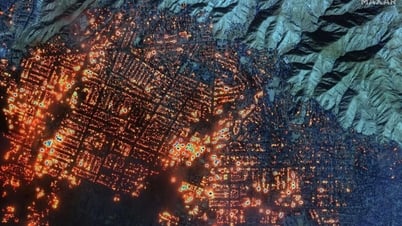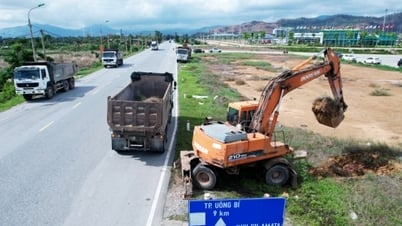
An Israeli soldier rests his head on the barrel of an armored vehicle's gun near the border with Gaza in southern Israel (Photo: AFP).
The report tallied weekly losses for the first three weeks of the war, which began on October 7, and concluded that the decline in labor supply was due to the mobilization of reserve troops, the evacuation of residents in the south and north, and the closure of theeducation system, which made it difficult for parents to go to work.
Specifically, Israel is said to have lost more than $325 million due to the closure of educational institutions, about $150 million due to 144,000 evacuated residents not going to work, and about $130 million due to the mobilization of about 360,000 reserve troops.
The Bank of Israel noted that the partial reopening of the education system in recent days could help reduce the damage.
After being surprised by Hamas' attack, Israel responded strongly with an air and ground campaign on the Gaza Strip, promising to completely destroy Hamas.
Israel and its closest ally, the United States, have no concrete plans for the future of the Gaza Strip. Israeli Prime Minister Benjamin Netanyahu has said his country will manage security in the Palestinian territory for an "indefinite period" after the war ends, but has ruled out a permanent occupation.
Since the outbreak of the conflict, several organizations have come up with estimates of the cost of Israel's war.
The economic newspaper Calcalist in early November estimated an "optimistic" figure of up to $51 billion, equal to 10% of GDP, assuming the war lasts 8-12 months, is confined to the Gaza Strip without intervention from Hezbollah, Iran or Yemen, and with 350,000 Israeli reservists returning to work soon.
The Israeli military disagrees with Calcalist's figure.
Meanwhile, Bank Hapoalim estimated in early October that Israel would spend at least $6.8 billion on the war with Hamas. This estimate is based on the cost of previous wars, such as the second war with Lebanon in 2006, which lasted 34 days and cost $2.4 billion.
Source


![[Photo] Panorama of the Opening Ceremony of the 43rd Nhan Dan Newspaper National Table Tennis Championship](https://vphoto.vietnam.vn/thumb/1200x675/vietnam/resource/IMAGE/2025/5/19/5e22950340b941309280448198bcf1d9)
![[Photo] President Luong Cuong presents the 40-year Party membership badge to Chief of the Office of the President Le Khanh Hai](https://vphoto.vietnam.vn/thumb/1200x675/vietnam/resource/IMAGE/2025/5/19/a22bc55dd7bf4a2ab7e3958d32282c15)
![[Photo] General Secretary To Lam attends the conference to review 10 years of implementing Directive No. 05 of the Politburo and evaluate the results of implementing Regulation No. 09 of the Central Public Security Party Committee.](https://vphoto.vietnam.vn/thumb/1200x675/vietnam/resource/IMAGE/2025/5/19/2f44458c655a4403acd7929dbbfa5039)
![[Photo] Close-up of Tang Long Bridge, Thu Duc City after repairing rutting](https://vphoto.vietnam.vn/thumb/1200x675/vietnam/resource/IMAGE/2025/5/19/086736d9d11f43198f5bd8d78df9bd41)



























![[Photo] Prime Minister Pham Minh Chinh inspects the progress of the National Exhibition and Fair Center project](https://vphoto.vietnam.vn/thumb/1200x675/vietnam/resource/IMAGE/2025/5/19/35189ac8807140d897ad2b7d2583fbae)




























































![[VIDEO] - Enhancing the value of Quang Nam OCOP products through trade connections](https://vphoto.vietnam.vn/thumb/402x226/vietnam/resource/IMAGE/2025/5/17/5be5b5fff1f14914986fad159097a677)



Comment (0)